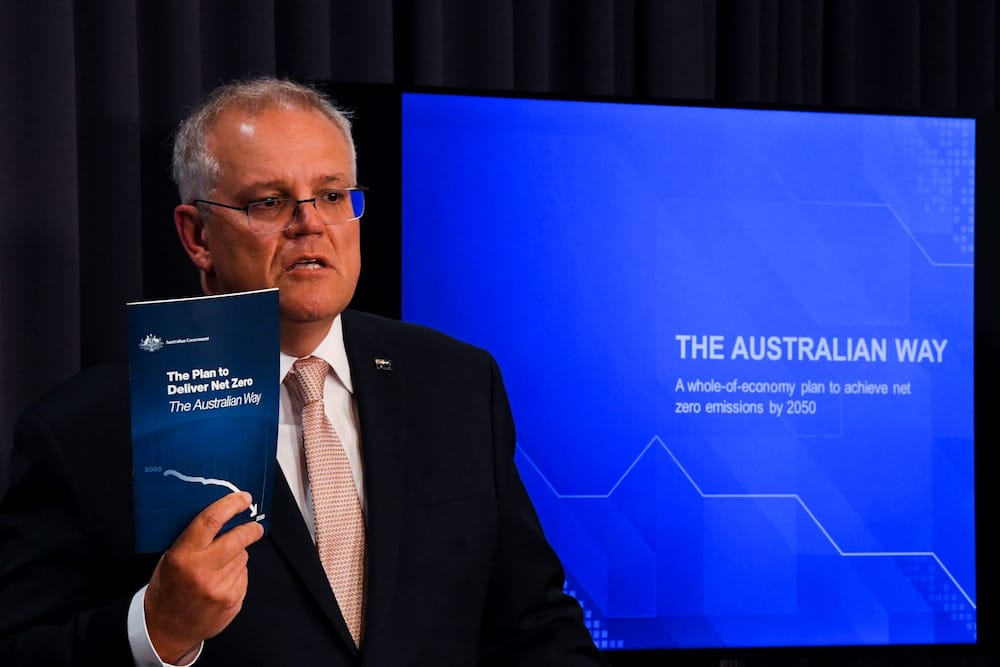Australia’s 2050 net-zero carbon emissions target will rely on existing technologies to meet 85 per cent of the goal with the remainder to be achieved through new breakthroughs.
Prime Minister Scott Morrison on Tuesday confirmed he would take the commitment to the United Nations climate conference which starts on Sunday in Glasgow.
Australia’s carbon emissions have fallen 20 per cent since 2005.
The plan to achieve the remaining 80 per cent in the next three decades relies on the government’s technology investment roadmap reducing emissions by 40 per cent.
Global technology trends are expected to account for 15 per cent, while international and domestic offsets represent a 10 to 20 per cent reduction.
The remaining 15 per cent is expected to be achieved through further technology breakthroughs.
Mr Morrison said there would be no legislation or mandates attached to the target.
“It will not increase energy bills. It is not a revolution but a careful evolution to take advantage of changes in our markets,” he told reporters in Canberra.
The Productivity Commission will every five years from 2023 monitor the socio-economic impact of climate action on regional communities.
The government has committed to spending $20 billion on low emissions technologies by 2030.
That is expected to trigger between $60 billion and $100 billion of public-private investments over the same period.
According to the plan, Australians will be almost $2000 between off on average in 2050, while 62,000 new regional mining and heavy industry jobs are mooted.
UK Prime Minister Boris Johnson hailed the commitment as heroic because of Australia’s heavy reliance on coal and other emissions-heavy industries.
But the COP26 summit his government is chairing is expected to focus on more ambitious 2030 targets from nations ramping up climate action.
Australia has ruled out boosting end-of-decade targets, instead relying on projections it will exceed a 26 to 28 per cent reduction by 2030.
The government’s latest data predicts emissions will be cut by 30 to 35 per cent on 2005 levels by 2030.
“We may even achieve better, but this is the approach we put to the Australian people,” Mr Morrison said.
Resources Minister Keith Pitt has been elevated to cabinet, giving the Nationals a fifth seat at the table, in return for the junior coalition partner’s support for the plan.
Opposition Leader Anthony Albanese seized on reports Deputy Prime Minister Barnaby Joyce and fellow Nationals cabinet ministers Bridget McKenzie and Mr Pitt opposed the goal in the party room.
Mr Albanese described the government as a shambles.
“They are committing the fatal mistake of wanting to provide two contradictory messages to different parts of the country,” he told a caucus meeting in Canberra.
Some Nationals backbenchers including outspoken Queensland senator Matt Canavan have vowed to continue campaigning against the policy.
There is internal concern the coalition could bleed votes to conservative outfits including Pauline Hanson’s One Nation and Clive Palmer’s United Australia Party.
AAP
Get all the latest Canberra news, sport, entertainment, lifestyle, competitions and more delivered straight to your inbox with the Canberra Daily Daily Newsletter. Sign up here.



